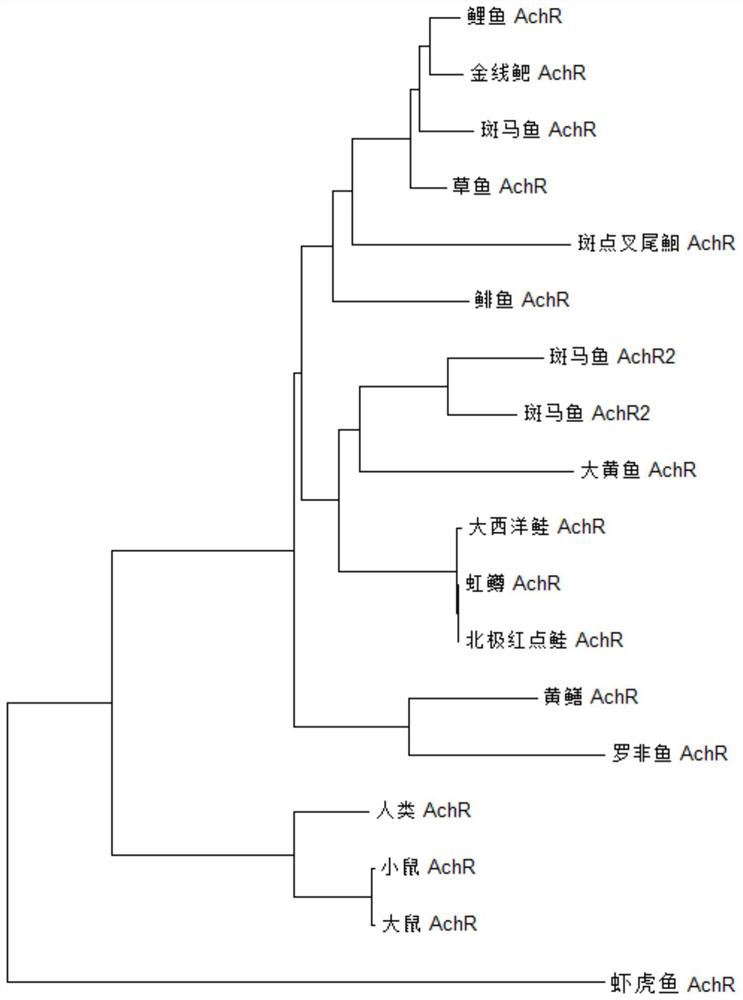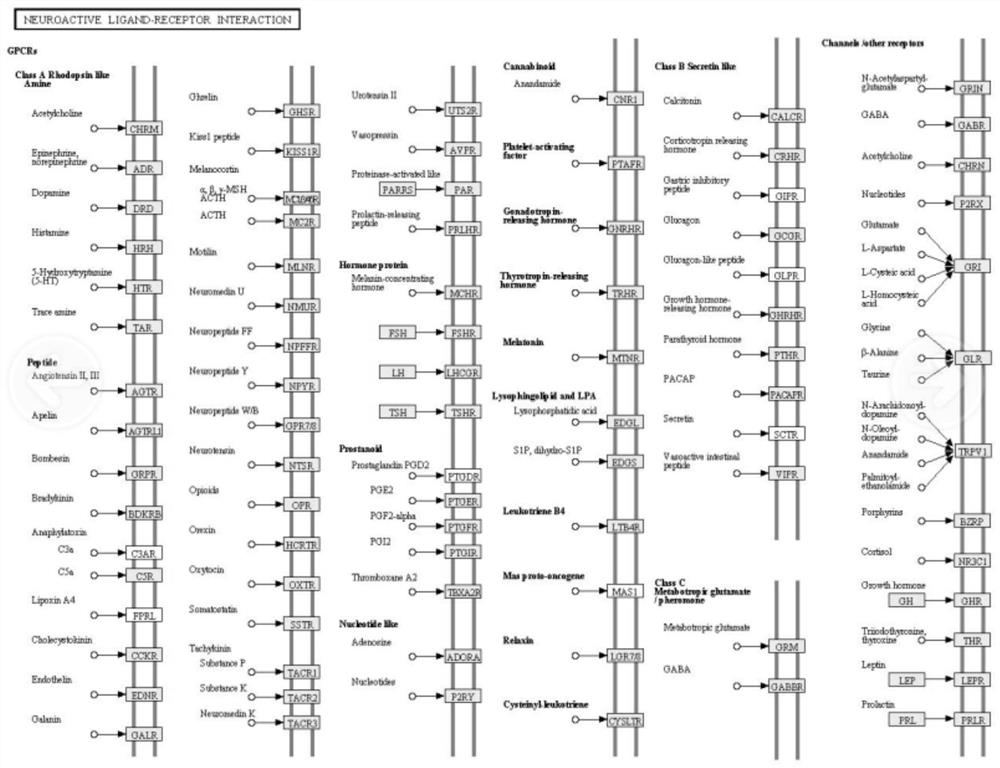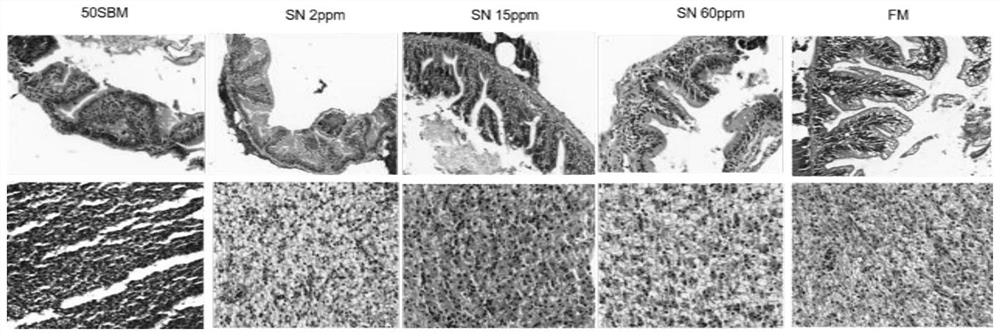Application of sinomenine in prevention and treatment of fish enterohepatitis caused by soybean meal feed
A sinomenine and fish technology, applied in the field of aquatic nutrition, can solve the problems of easily producing drug-resistant strains, endangering human health, and increasing the dosage of drugs, so as to avoid residues and environmental safety problems, have no toxic side effects, Effect of suppressing intestinal inflammation
- Summary
- Abstract
- Description
- Claims
- Application Information
AI Technical Summary
Problems solved by technology
Method used
Image
Examples
Embodiment 1
[0027] Example 1 Evolutionary analysis of the acetylcholine receptor protein of common farmed fish
[0028] Sinomenine, by binding to acetylcholine receptors, signals to activate cholinergic anti-inflammatory pathways. Therefore, in order to demonstrate the widespread existence of the acetylcholine anti-inflammatory pathway in farmed fish, we performed protein sequence alignment and constructed an NJ tree evolution analysis on the acetylcholine receptor nAchR-alpha7 of common farmed fish. Acetylcholine receptor nAchR-alpha7 protein in grass carp genome ( http: / / bioinfo.ihb.ac.cn / gcgd ) to find 2 genes and download their coding sequences. Other fish acetylcholine receptor nAchR-alpha7 protein sequences are from NCBI. Evolutionary analysis of the acetylcholine receptor nAchR-alpha7 protein in the cholinergic anti-inflammatory pathway in fish showed that (see figure 1 ), common farmed fish have this receptor, and the protein amino acid sequence similarity is very high (80%-1...
Embodiment 2
[0030] Example 2 Application of sinomenine as a feed additive in alleviating soybean meal-induced zebrafish intestinal and liver inflammation
[0031] KEGG pathway analysis of grass carp transcriptome suggested the existence of cholinergic anti-inflammatory pathway in fish: Intestinal inflammation of grass carp in 40% soybean meal replacement group had self-healing ability from week 5 to week 7. At each stage of the course of the disease, including 0 days, 3 weeks, 5 weeks, and 7 weeks, the transcriptome of the intestinal tissue was measured, and the analysis results in the KEGG pathway showed that the acetylcholine (Acetylcholine) pathway was involved in the occurrence and regression of soybean meal-induced enteritis. are activated ( figure 2 ), implying that the fish cholinergic anti-inflammatory pathway may exist.
[0032] 1. The experimental feed formula and preparation method of adding sinomenine in the zebrafish model
[0033] Table 1 Zebrafish SBMIE modeling and sino...
Embodiment 3
[0047] Example 3 Application of sinomenine as a feed additive in restoring soybean meal-induced zebrafish growth inhibition
[0048] 1. The formula and preparation method of the experimental feed for adding sinomenine in the zebrafish model, the formula and configuration method of the experimental feed for modeling zebrafish SBMIE and adding sinomenine are the same as in Example 2.
[0049] 2. After all the experimental zebrafish (2-month-old adult fish) were fed with the feed of the fishmeal group for 2 weeks, they were fed with the feed of the corresponding group for 3 weeks, and each time they were fed slowly until they no longer rushed for food. The food intake was about 23 mg per fish per day, and the growth and development of zebrafish were normal during the experimental stage, with a survival rate of over 98%.
[0050] 3. Determination of growth performance. In vivo 3Dmicro-CT was used to analyze the content and proportion of adipose tissue obtained from the zebrafish t...
PUM
| Property | Measurement | Unit |
|---|---|---|
| particle diameter | aaaaa | aaaaa |
Abstract
Description
Claims
Application Information
 Login to View More
Login to View More - R&D
- Intellectual Property
- Life Sciences
- Materials
- Tech Scout
- Unparalleled Data Quality
- Higher Quality Content
- 60% Fewer Hallucinations
Browse by: Latest US Patents, China's latest patents, Technical Efficacy Thesaurus, Application Domain, Technology Topic, Popular Technical Reports.
© 2025 PatSnap. All rights reserved.Legal|Privacy policy|Modern Slavery Act Transparency Statement|Sitemap|About US| Contact US: help@patsnap.com



